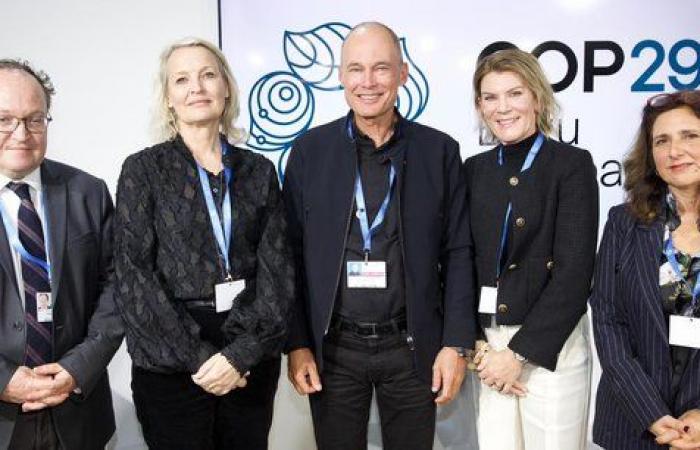The second week of COP29 opens in Baku, with climate finance still at the center of attention. But even today, we talk about it above all as compensation, reparation from the countries of the North to the countries of the South, the main victims of climate change to which their frugal CO2 emissions have hardly contributed.
However, the multitude of clean and profitable solutions, as well as the cost of inaction, also allow us to see climate finance as a profitable investment, in the North as in the South. This is particularly the case for the energy transition, at the heart of this new mode of operation that our societies must find to ensure their sustainability.
Transition to what?
Of course, towards a model where fossil fuels are replaced (and as quickly as possible) by renewable energies. But let’s look at the trends, both in terms of world population and socio-economic development. It would be illusory to think that the world of today and even more so of tomorrow will be able to run on renewables only, if we continue to waste two thirds of the energy produced as we currently do.
This is where efficiency comes into play.
The shameful waste of our modes of production and consumption explains a large part of the environmental slump in which we find ourselves. But in addition to the CO2 emitted, this situation also causes considerable financial losses: 4.6 trillion dollars annually!
The last COP in Dubai began to put energy efficiency more on the agenda of climate debates, but much remains to be done for it to materialize, sector by sector, SME by SME, building by building. Because to achieve energy efficiency, the problem is not the supply of efficient solutions – because there are hundreds of them in all areas – but demand. Very often, these devices are more expensive to purchase than their polluting equivalents, even if they prove to be much more profitable in the long term.
So, how can we make this offer more attractive?
By changing the way solutions are marketed. Companies can move from selling products to selling results (kilometres traveled by electric bus instead of buses themselves, light instead of bulbs, yield per hectare instead of tons of fertilizer ).
The end user pays for the service without purchasing the property, while the provider keeps the asset. This “servitization” model has strong potential to accelerate the deployment of efficient solutions, which, despite a high initial cost, offer a lower total cost of ownership thanks to reduced operating expenses.
What are the implications of this paradigm shift?
For the adopter, this is a major incentive, as the initial investment disappears. For the solution provider, the interest is no longer to sell the greatest quantity of products, but the best possible quality. The more reliable a product is, the higher the profit margin. It’s the end of planned obsolescence!
This model represents a new form of economics, which I call “qualitative economics”. To develop, it requires the arrival of a third player capable of taking charge of the initial investment.
This is the meaning of the Energy Efficiency Initiative launched in Baku between the Solar Impulse Foundation, the European Investment Bank and the European Commission. By combining public investments, guarantees and private capital, it will strengthen the deployment of efficient solutions for the benefit of SMEs, in particular through “servitization”.
Innovation is not just technological, it must also be financial. This will allow climate action to bring together all stakeholders by proving its economic profitability.






